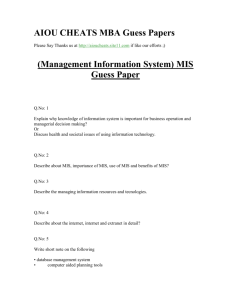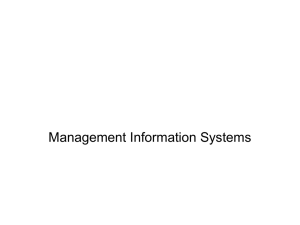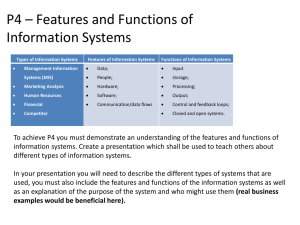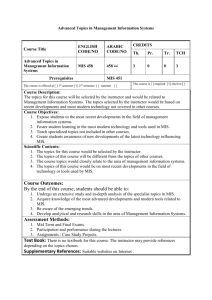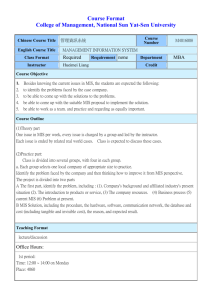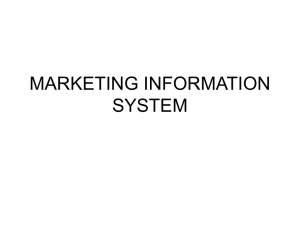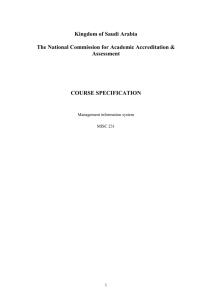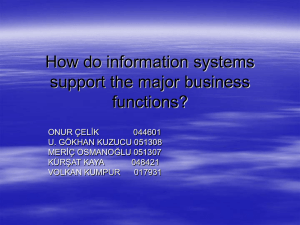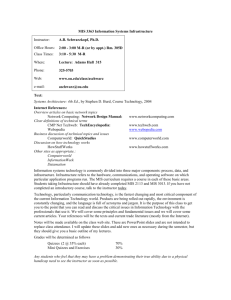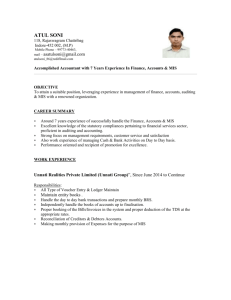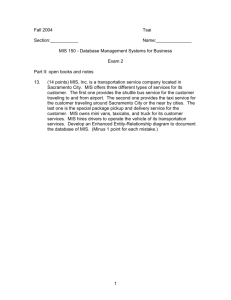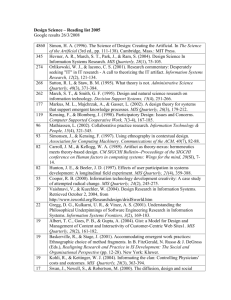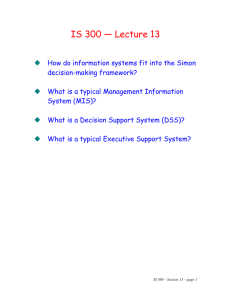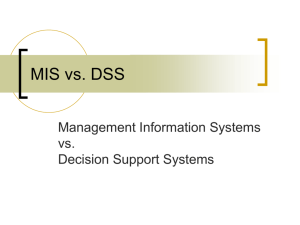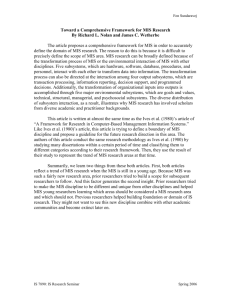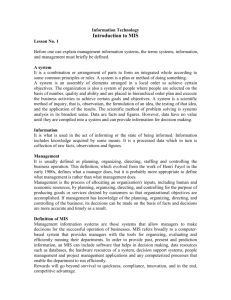System Analysis and Design - Banshi College of Education
advertisement
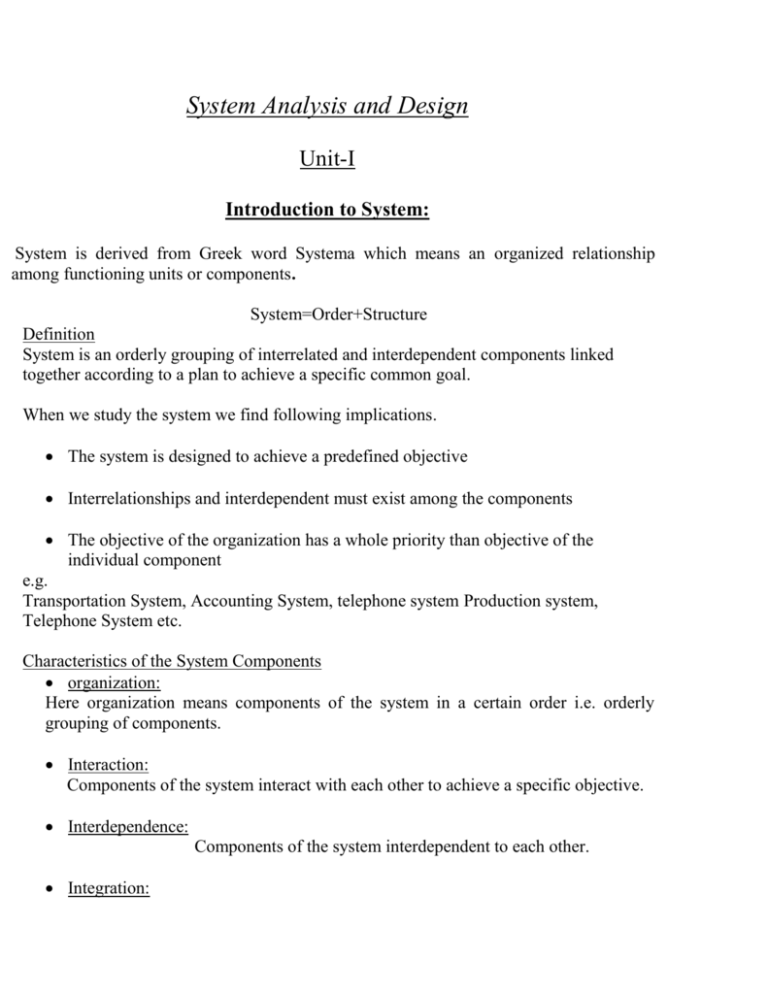
System Analysis and Design Unit-I Introduction to System: System is derived from Greek word Systema which means an organized relationship among functioning units or components. System=Order+Structure Definition System is an orderly grouping of interrelated and interdependent components linked together according to a plan to achieve a specific common goal. When we study the system we find following implications. The system is designed to achieve a predefined objective Interrelationships and interdependent must exist among the components The objective of the organization has a whole priority than objective of the individual component e.g. Transportation System, Accounting System, telephone system Production system, Telephone System etc. Characteristics of the System Components organization: Here organization means components of the system in a certain order i.e. orderly grouping of components. Interaction: Components of the system interact with each other to achieve a specific objective. Interdependence: Components of the system interdependent to each other. Integration: Integration among the components of the system. Central Objective All the components of the system integrated in such a way to obtain central objective rather than individual. Elements of the System: There are the following elements of the system: Outputs and Inputs. Processor(s) Control. Feedback. Environment. Boundaries & Interface. Classification of the system: The system is classified into the following Deterministic System: It operates in predictable manner and also interaction among the subsystem e.g. A computer program is a deterministic system. Probabilistic System: This is described in probable area and certain degree of errors is always attached to the predictable portion. e.g. the inventory control System. Closed System: A system is said to be closed if, it does not exchange material information or energy with its environment i.e. it is self contained system. e.g. Chemical reactions Open system: It exchanges energy or material information from its environment e.g. Biological System, Hospital System. Formal Information System: A formal information system is based on the organization represented by the organization chart. The chart is map of positions and authority relationship, indicated by boxes and connected by straight lines. The formal information system is a power structure designed to achieve company goals. An organization’s emphasis on control to ensure performance tends to restrict the communication flow among the employees. Informal information System: It is an employee based designed to meet personnel and vocational needs and to help solve work related problems It also funnels information upward through indirect channels. In this respect, it is useful system because it works within the framework of the business and its stated policy. Physical or abstract systems: Physical systems are tangible entities that may be static or dynamic in operation. e.g. The physical parts of the computer center are the offices, desks, and chairs that facilitate operation of the computer. They can be seen and counted; they are static in contrast, a programmed computer is a dynamic system. Data, programs output, and applications changes as the user demands or the priority of the information requested changes. Abstract system: These systems are conceptual or nonphysical entities. They may be straightforward formulas of relationships among the sets of variables or models- the abstract conceptualization of physical situations. A model is representation of real or planned system. Data and information Data: Data is the raw material for the information. Information: Data processing is called an information Or Processed data i.e. results of the processed data is called an information. Data Input Processing Information (Results) Output Computer Based Information system: It provides data processing capabilities and information that an organization need to informed about various aspects of its operations Because information is valuable asset to any organization. It must be carefully acquired and organized into a system that is useful. Characteristics: It must provide accurate information. Provide timely information i.e. weekly, monthly etc. Different department can share that information. MIS (Management Information System) MIS has three components: Management Information System. Management Process Resources Activities Man Money Material Machine Planning Organizing Controlling Directing Initiating Definition of MIS: The MIS is defined as an integrated system of man and machine for providing the information to support various operations, The Management and decision making function in the organization. The MIS is defined as a system which provides the information to support the decision making in the organization. The primary users of MIS are middle and top management, operational managers and support staff. The operational managers use MIS for short range planning and periodic and exception reports. MIS is useful for the special analysis of information and reports to help management in planning and controlling. DSS (Decision support system): The components of DSS are: Decision: emphasizes decision making in the problem situations, not information processing, retrieval or reporting. Support: support requires computer-aided decision situation with enough “structure” to permit computer support. System: Accentuates the integrated nature of problem solving, suggesting a combined environment of “Man” “Machine” and decision. The main functions of DSS are: Decision support system looks into the decision making activities of managerial and end users. It supports the managers in strategic planning and controlling. It supports the managers to solve their semi structured and unstructured problems. It provides interactive information to managers during the decision making process. It makes use of the following in its decision making process. i) Analytical Model. ii) Specialized database. Skills of the system Analyst 1. Interpersonal Skills: i. Communication ii. Understanding iii. Teaching iv. Selling v. Creativity 2. Technical Skills: i. Creativity ii. Problem solving iii. Project Management iv. v. vi. Dynamic Interface Question attitude and inquiring mind Knowledge of the basics of the computer and business function. Role of the System Analyst in MIS Organization Change Agent Investigator and Monitor Architect Psychologist Salesperson Motivator Politician




